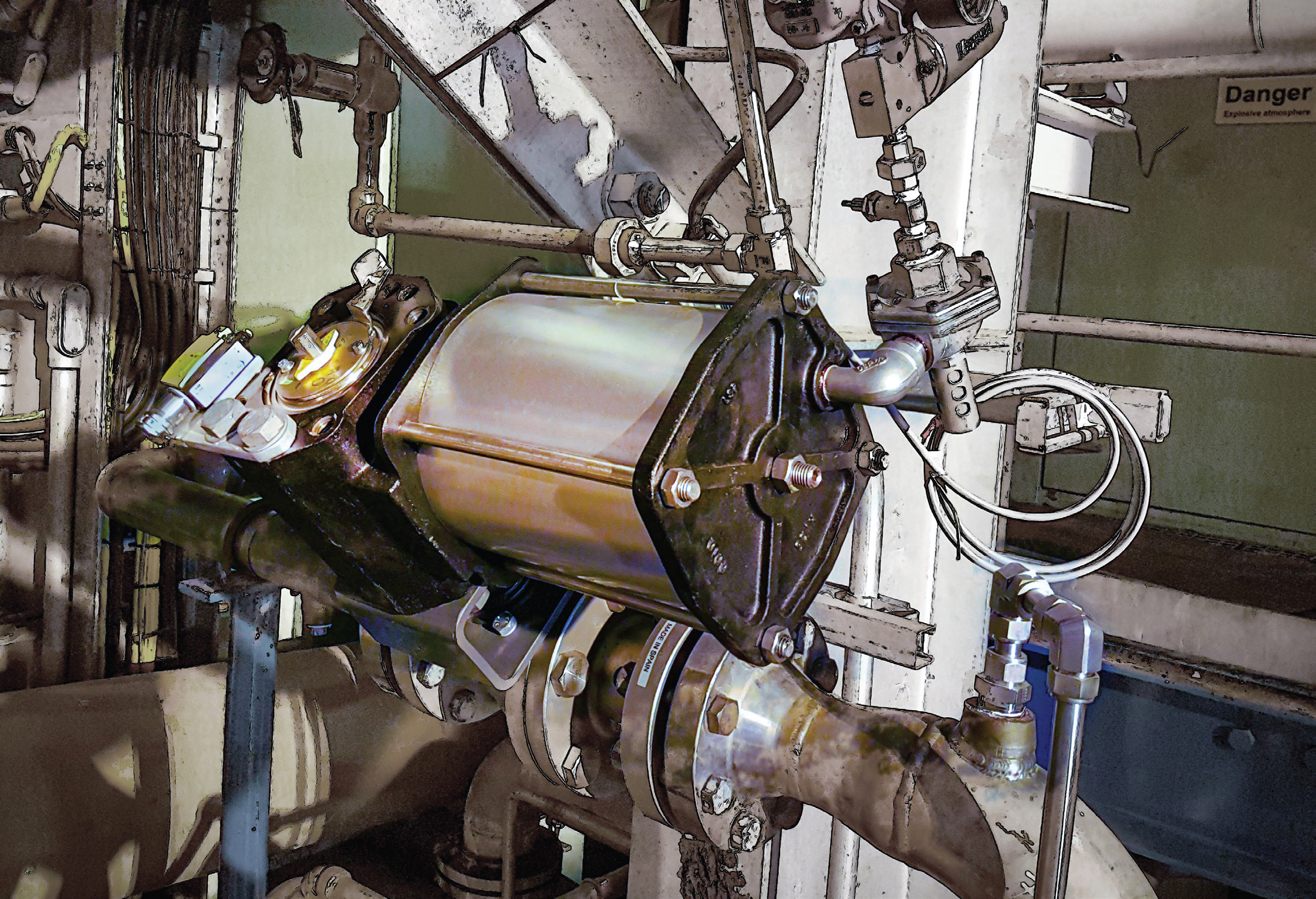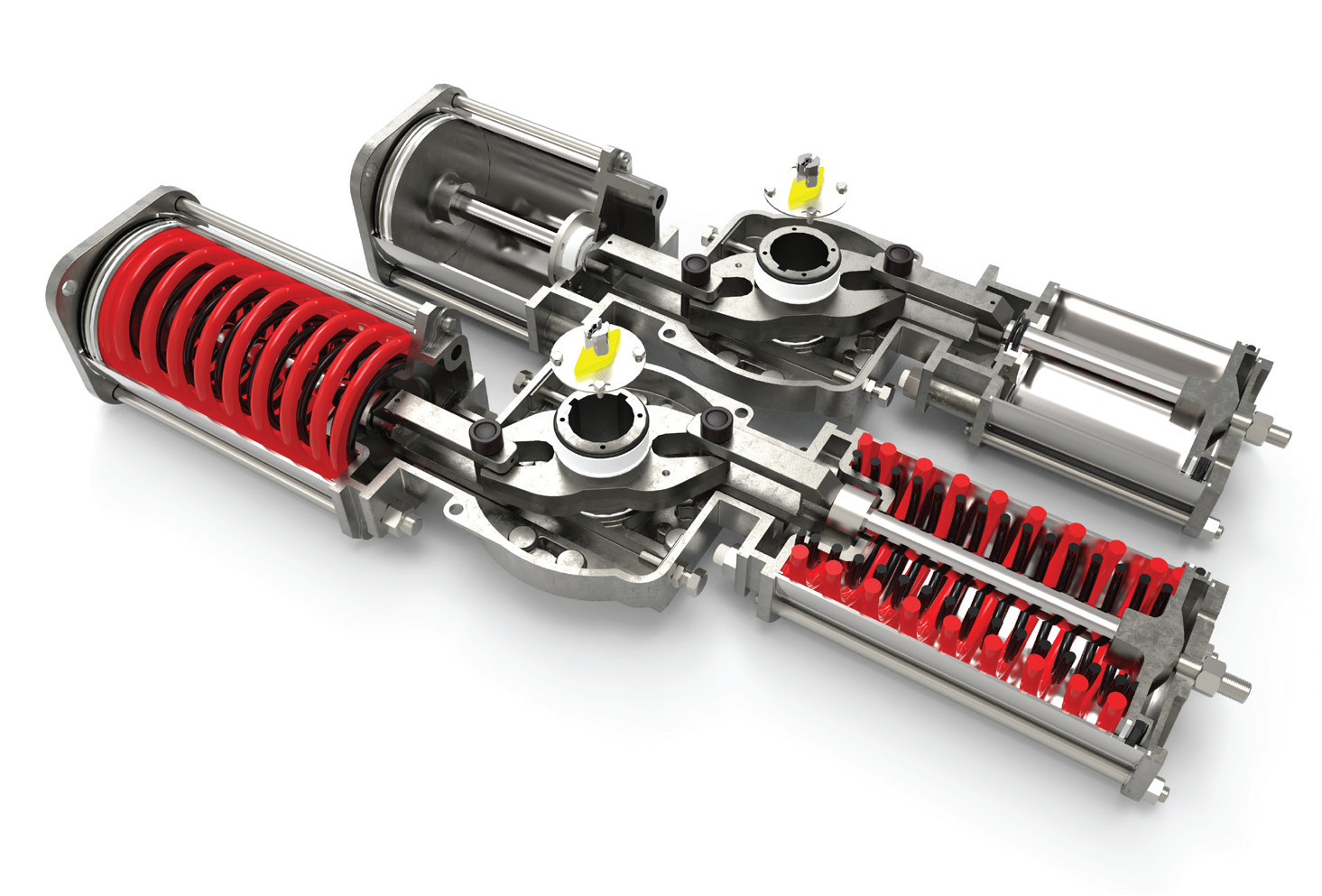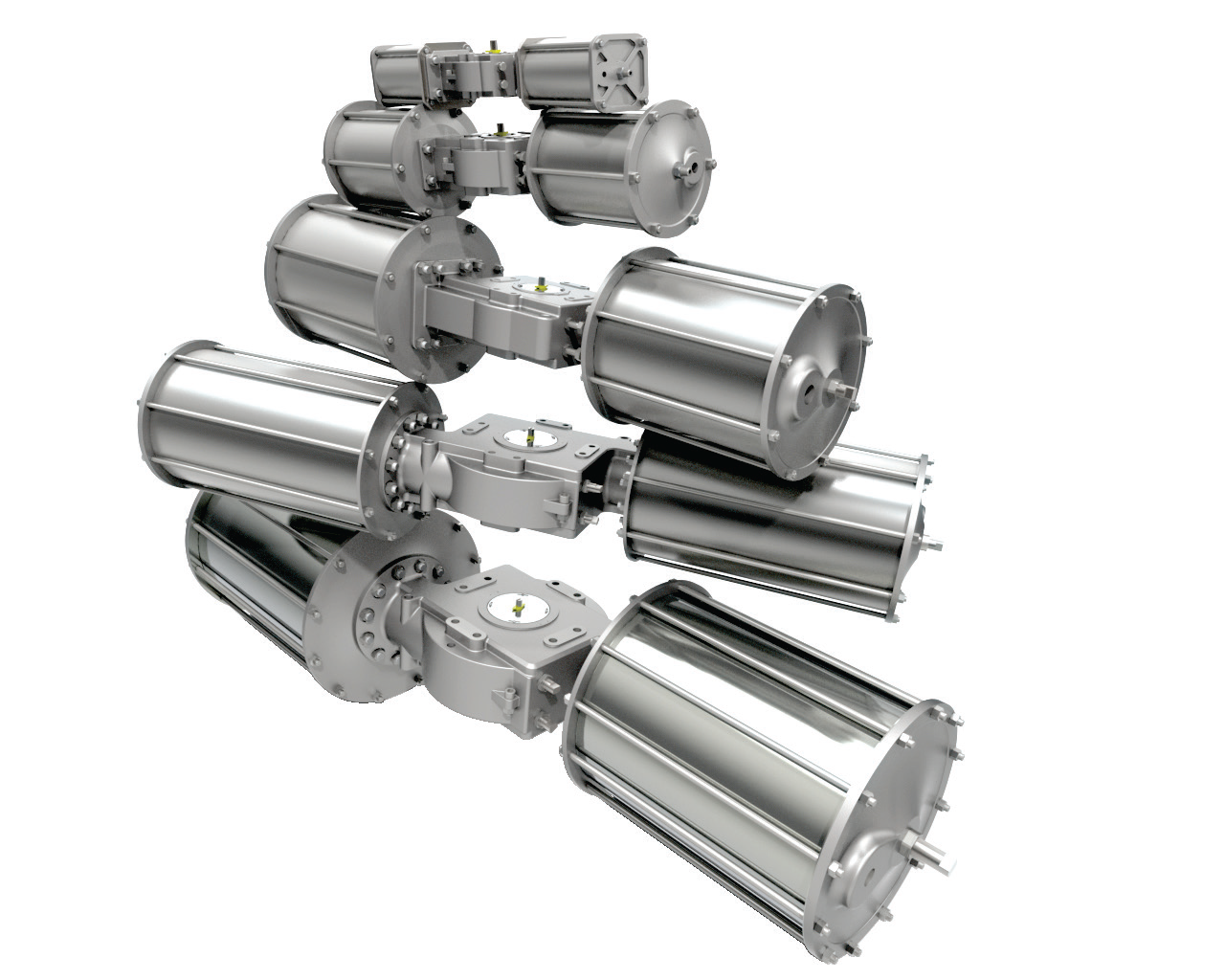In industrial applications, throttling valves play a crucial role in managing processes by facilitating the fine-tuning of flow rate, pressure, and temperature within the system. Unlike on/off valves, these control valves can be opened or closed in a range of tiny increments to regulate the flow of gases, liquids, fluidized solids, or slurries through the system.
By Jeff Elliott, Technical Writer
To accomplish this, valve manufacturers often specify or recommend the actuators required, which are evaluated for fit and use and often published in the OEM’s global pricing guides. Still, many defer to the customer’s preferences, which may be driven by the style or brand of actuator they are familiar with or that is installed throughout the plant – even if they do not offer fine throttling control.
However, installing an actuator with poor throttling capabilities can hamper fine control of the process, increase overall costs, and lead to unnecessary repairs and even safety risks. “The valve defines the application, but the actuator needs to be able to power it the way it needs to be powered for throttling applications,” said Shawn Hughes of Tomball, Texas-based QTRCO actuators.
For throttling applications, a key factor in the selection of the valve is its turndown ratio, which is calculated by dividing the maximum flow rate that the valve can handle by the minimum flow rate it can reliably control.
“A higher turndown ratio indicates better capabilities in modulating flow rates from mere drops per minute to potentially gallons per second when wide open,” explained Hughes. “Although most valves do not offer a turndown ratio this broad, the actuator that is paired with it must be designed to make small percentage adjustments over the entire available range.

According to Hughes, flow control loops typically involve downstream sensors that send pneumatic or analog input signals that instruct the actuator to move the valve in specified increments. The continuous feedback allows the valve to be throttled to meter liquids and gases at the required volume and speed.
To achieve a level of fine control, the actuator must deliver an extremely fast and accurate response to any signal. This is generally indicated by the actuator’s device input change, which is the measure of the amount of input required to move the valve. “Most quality actuators operate in a 2% device input range,” continued Hughes. “However, some well- known brands only achieve 5% on a good day.” For fine throttling applications, this level of control is simply too clumsy.
Given internal friction and other factors that must be overcome for the actuator to move, a 5% device would require significant input to move and consequently offer considerably less control of throttling. In many control applications, even input signals of 2% may not be sufficient.
“Five percent is a million miles apart from 0.5% [device input change] in terms of control valve precision for fi ne throttling control applications,” said Hughes. “A really tight control throttling valve system is going to be about a half a percent.”
Still, finding actuators that can deliver this level of control falls squarely in the category of easier said than done. The type of valve- ball or butterfly, to name a few and the torque required to open or close it incrementally are often a factor.
Some styles such as rack & pinion actuators are slightly better designs for throttling applications, given they generally offer a device input change of 2% or lower. However, there is a ceiling to the size and type of valve that a rack & pinion actuator can operate, and so scotch yoke designs are often the only choice, but they are “typically 5% devices,” said Hughes.
Fortunately, leading actuator suppliers are addressing these needs with solutions for fine throttling control in several different actuator styles that are 0.5% devices. In the late 90s, for example, QTRCO introduced its Q Series with an internal “rack & gear” mechanism as an alternative to traditional “lunchbox style” rack & pinion actuators. The Q-Series is capable of accurately and reliably positioning any rotary control valve with up to 21,000-inch lbs. of required torque.
The rack & gear design eliminates many of the sources of internal friction. Unlike a traditional rack & pinion actuator, the pneumatically powered actuator design is also reversed so air is forced into the end cap. As a result, much less fill volume is required, because the piston is at the end of the cap. This means the actuator has a much faster response and is easier to control for throttling applications.
“Traditional rack and pinion actuators experience significant internal friction, which hampers precision control and is commonly referred to as ‘stiction’ [sticking caused by friction] in our industry,” said Hughes.
Because actuators with only one large, heavy piston can damage the cylinder as the piston moves up and down in small movements while throttling, QTRCO offers a two-piston version of their rack & gear actuator to reduce the weight and potential damage caused during throttling.

Due to its design, rack & pinion or rack & gear actuators are well suited for use on large metal seated ball valves, since they require a consistent amount of torque all the way through their stroke.
For butterfly valves, which can be very large in industrial settings, the amount of torque required must be much higher at the beginning and end of the stroke, with much less in between.
“If you look at the torque curve of a scotch yoke it resembles the letter “U,” said Hughes. The torque is high at the beginning and end of the stroke. This type of actuator is ideal, therefore, for butterfly valves that require high torque to squeeze the disk in and out of the seat, but less in the middle.”
This can present challenges if a scotch yoke actuator is installed on a valve that requires constant torque, such as a metal-seated ball valve. When ball valves are very large, there is a ceiling to the size and weight (and cost) that a rack & pinion or rack & gear can control, and so scotch yoke actuators are often utilized.
This often requires “sizing up” when purchasing a scotch yoke mechanism because the torque at the lowest point of the “U” must always be higher than the constant torque required.


The other issue is that Scotch yoke actuators typically do not offer fine throttling control. For example, an alternative is the company’s F Series Flat Yoke actuators, which have extremely low internal friction and can accurately and reliably position any rotary control valve requiring up to 500,000-inch lbs. of torque. Comprehensively tested for throttling applications, the flat yoke tested as a 1% device without any tuning.
In fact, Flat Yoke actuators provide nearly the same throttling capabilities as spring diaphragm actuators for larger diameter rotary control valves with a high level of accuracy and repeatability. According to Hughes, large valve manufacturers have already tested and evaluated these types of actuators to verify improved performance for throttling applications.
He added that these types of actuators provide another significant value-add for valve OEMs, namely the ability to rebuild or maintain the actuator without removing it from the valve.
This is a crucial factor, given the extreme precision required to mount actuators to large valves. Even a slight misalignment during mounting can result in severe damage to a valve that carries a hefty price tag of hundreds of thousands of dollars. The connection is so significant that some major valve manufacturers will void warranties if the actuator is removed



